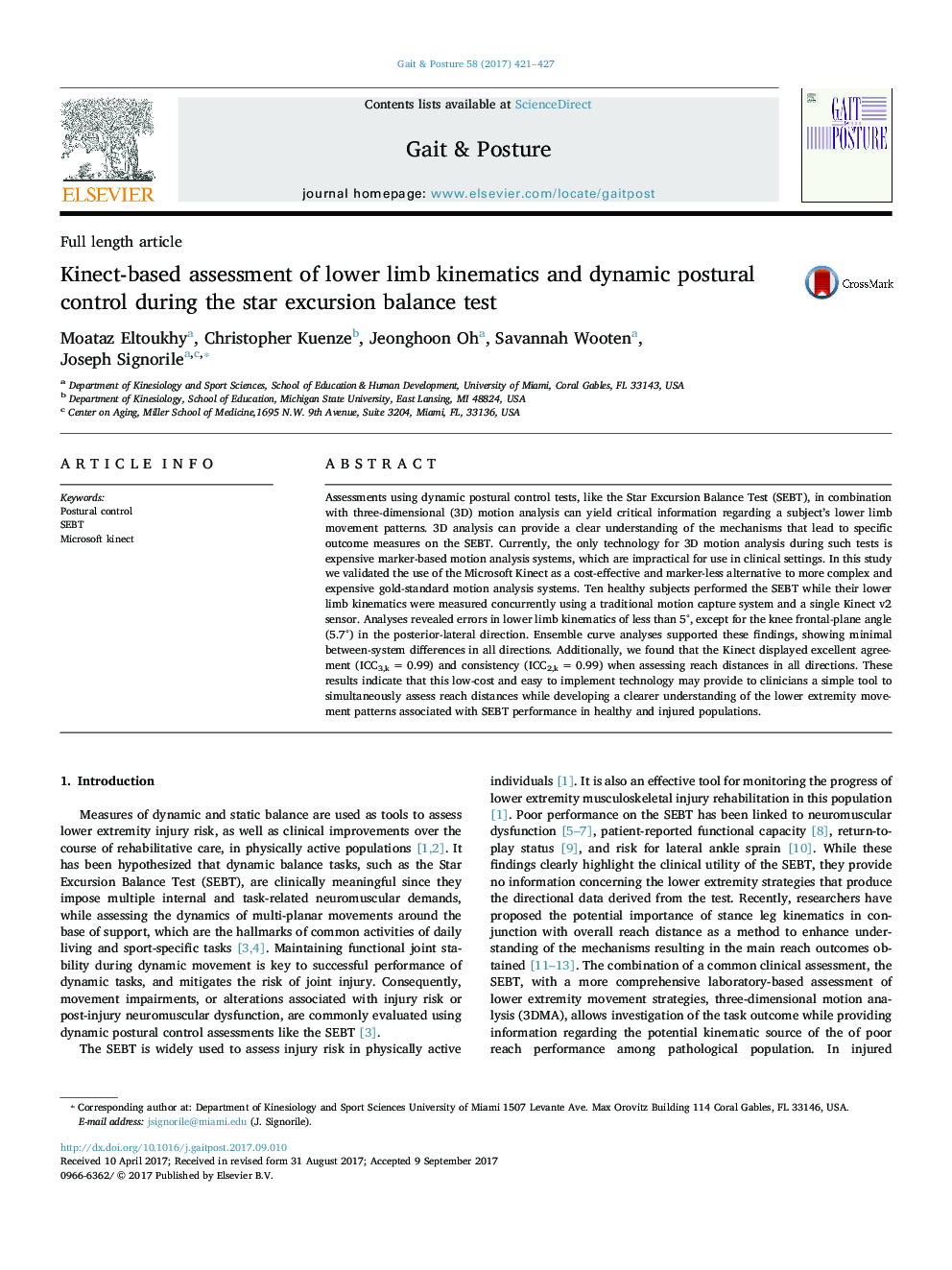| Article ID | Journal | Published Year | Pages | File Type |
|---|---|---|---|---|
| 5707647 | Gait & Posture | 2017 | 7 Pages |
Abstract
Assessments using dynamic postural control tests, like the Star Excursion Balance Test (SEBT), in combination with three-dimensional (3D) motion analysis can yield critical information regarding a subject's lower limb movement patterns. 3D analysis can provide a clear understanding of the mechanisms that lead to specific outcome measures on the SEBT. Currently, the only technology for 3D motion analysis during such tests is expensive marker-based motion analysis systems, which are impractical for use in clinical settings. In this study we validated the use of the Microsoft Kinect as a cost-effective and marker-less alternative to more complex and expensive gold-standard motion analysis systems. Ten healthy subjects performed the SEBT while their lower limb kinematics were measured concurrently using a traditional motion capture system and a single Kinect v2 sensor. Analyses revealed errors in lower limb kinematics of less than 5°, except for the knee frontal-plane angle (5.7°) in the posterior-lateral direction. Ensemble curve analyses supported these findings, showing minimal between-system differences in all directions. Additionally, we found that the Kinect displayed excellent agreement (ICC3,k = 0.99) and consistency (ICC2,k = 0.99) when assessing reach distances in all directions. These results indicate that this low-cost and easy to implement technology may provide to clinicians a simple tool to simultaneously assess reach distances while developing a clearer understanding of the lower extremity movement patterns associated with SEBT performance in healthy and injured populations.
Keywords
Related Topics
Health Sciences
Medicine and Dentistry
Orthopedics, Sports Medicine and Rehabilitation
Authors
Moataz Eltoukhy, Christopher Kuenze, Jeonghoon Oh, Savannah Wooten, Joseph Signorile,
